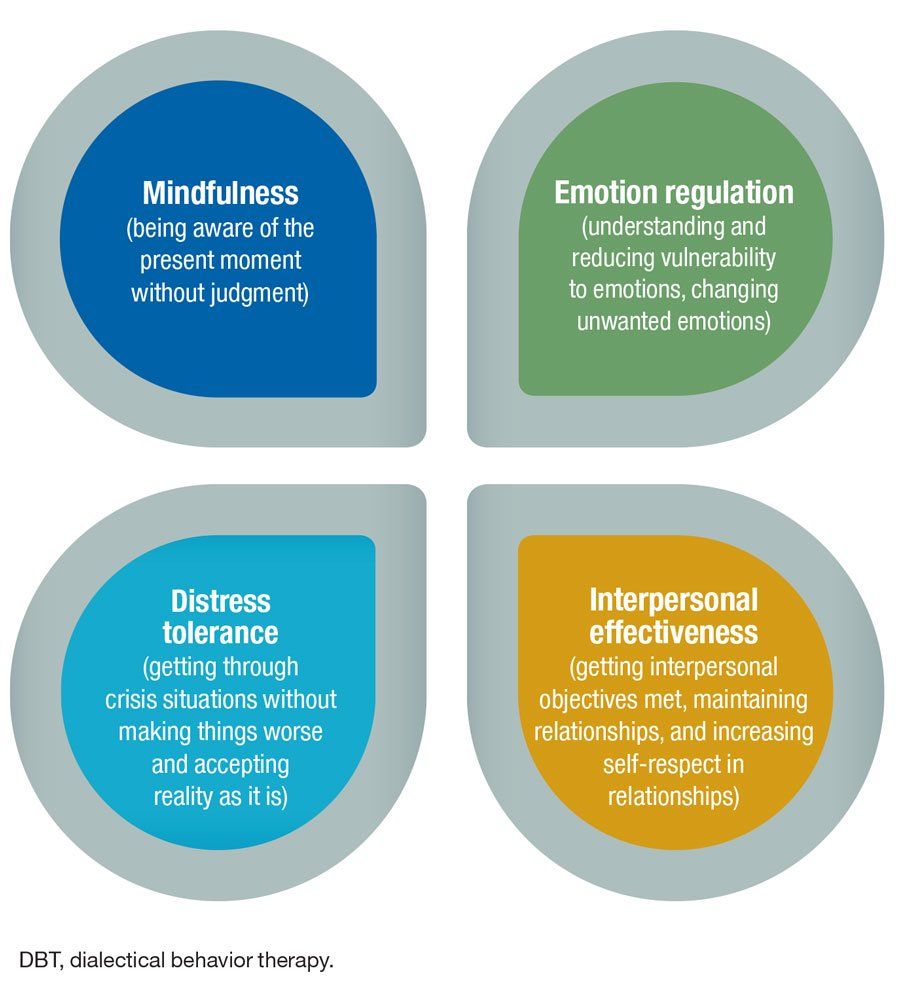

The goal of DBT is to teach adolescents techniques to help them understand their emotions without judgment - the mindfulness component - and also to give them skills and techniques to manage those emotions and change behaviors in ways that will make their lives better. Dysregulation leads to impulsive, self-destructive, or self-harming behaviors. “Blending the acceptance strategies of mindfulness with the change technologies of CBT to create this dialectical behavior therapy.”ĭBT treatment is designed to help with extreme emotional instability, which clinicians call “dysregulation” - the inability to manage intense emotions. “So then she had this brilliant epiphany,” says Dr. So she then tried a much more acceptance-based approach that came out of her meditation and mindfulness practice. Linehan tried traditional CBT, which emphasizes using conscious thoughts to confront and change problematic emotions. That, in turn, often leaves them feeling misunderstood by others around them. People with borderline personality disorder have trouble regulating their moods, which leads to impulsivity and conflict in interpersonal relationships. Linehan redefined the disorder, reframing it as a specific problem of the emotion regulation system that can be addressed with a structured intervention. These patients were typically thought of as “difficult,” if not impossible, to treat. It also gives them the tools to manage their problems better and stick to habits like eating well, getting enough sleep, taking their medication, and staying away from drugs.ĭialectical behavior therapy was developed by Marsha Linehan, PhD, in the 1970s to treat adult borderline personality disorder - a mental illness with symptoms ranging from chronic suicidal thoughts and/or self-harming behaviors to anxiety and depression.

DBT helps kids see when they’re dealing with a problem in a way that’s not helpful to them.

#Dialectic behavior therapy how to
In DBT, kids learn how to relate to others in healthier ways. DBT can especially help kids and teens who are hurting themselves or who think about dying a lot. It’s often helpful for kids who have had trouble with other kinds of therapy. DBT is used to treat everything from anxiety to depression, ADHD, bipolar disorder, eating disorders, and drug abuse. Teens can also call their therapists when they need extra help or are thinking of hurting themselves.ĭBT was first created to treat a condition called borderline personality disorder, but it can help kids with lots of issues. A therapist can help kids and parents relate to each other. In family therapy, parents and kids get to talk about how things are going at home. Teens and their parents learn new skills together to help kids deal with hard feelings. The second, a treatment called CBT (cognitive behavioral therapy), teaches them how to change their feelings and behavior.ĭBT for adolescents includes one-on-one time with a therapist, group skills training, and family therapy. The first, called mindfulness, helps kids understand and accept difficult feelings. DBT works by combining two sets of skills. It’s an intensive, structured kind of therapy that can help kids and teens who have a lot of trouble handling their strong emotions.

DBT stands for dialectical behavior therapy.


 0 kommentar(er)
0 kommentar(er)
